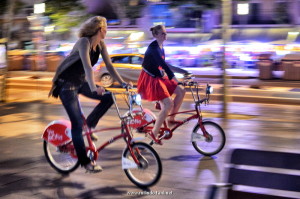
My recall of a Kollwitz woodcut is from many years ago, titled ‘Die Mütter’ (The Mothers) – a huddled heap of bereaved and bereft humanity, seeking to console and comfort each other, with futility, for they appear to be calcified by a known or unknown terror. That woodcut remained etched in my consciousness for a long time, tucked away in some obscure drawer, but always there, always gnawing. The work of 19th C / early 20th C German artist Käthe Kollwitz, is not one of tentative, delighting probing but of cathartic, universal anguish. Unleashing a visceral chronicle of human suffering and struggle – through depicting injustice, poverty, and the terrible price of mindless man made conflicts, her work achieves an emotional tenor and intensity that resonates beyond her immediate circumstances in Germany of the early 20th C. Fighting off personal tragedies, and a distinctly ‘gender unequal’ social and cultural milieu, Kollwitz emerged to become the first woman ever to be elected to the prestigious Prussian Academy of Arts, in 1920. About a century later, her work continues to remind us of the fragility and despair of the human condition, where vast populations still seek social justice, and with mindless looming war-clouds over the horizon, her work is a strong reminder that man made conflict always draws a terrible price, a price that is both devastating and unceasing. Take a peek at her work:

The Mothers. Plate 6 from the series ‘Krieg’ (War.) 1922–23. Woodcut.
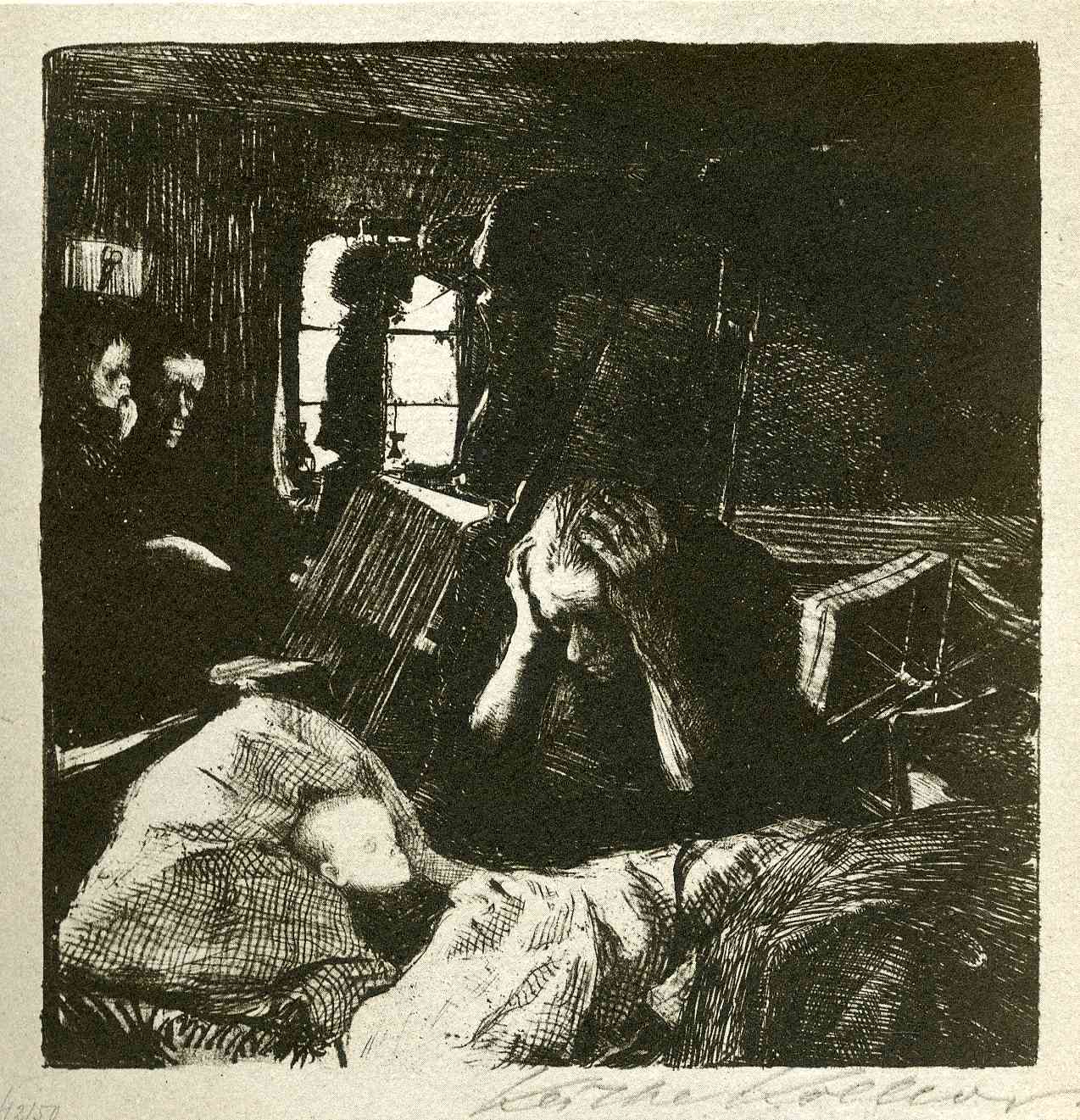
Need. From ‘A Weaver’s Revolt’, sheet 1. 1893-97. Lithograph.

Death. From ‘A Weaver’s Revolt’, sheet 2. 1893-97. Lithograph.
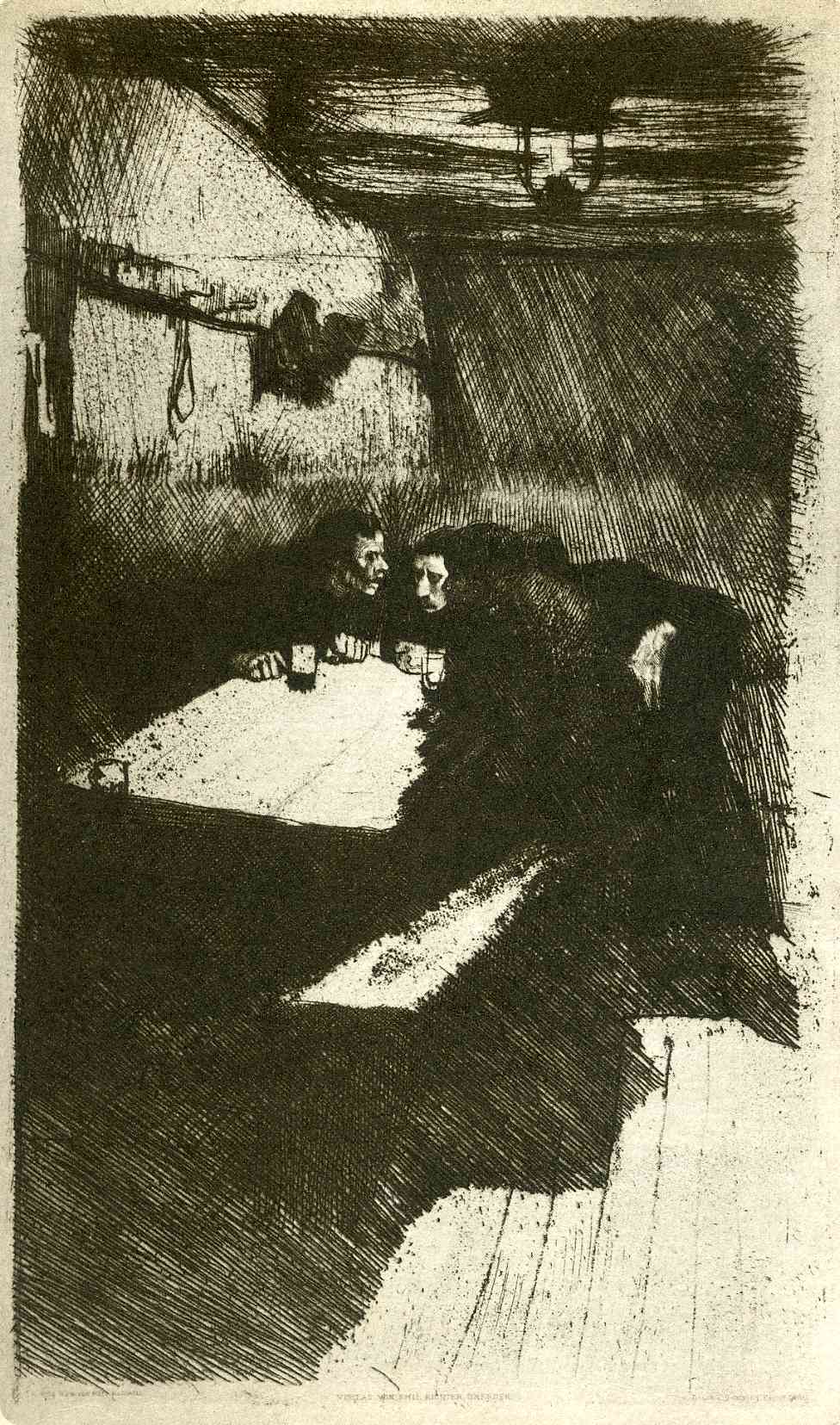
Conspiracy. From ‘A Weaver’s Revolt’. 1893-97. Line etching.
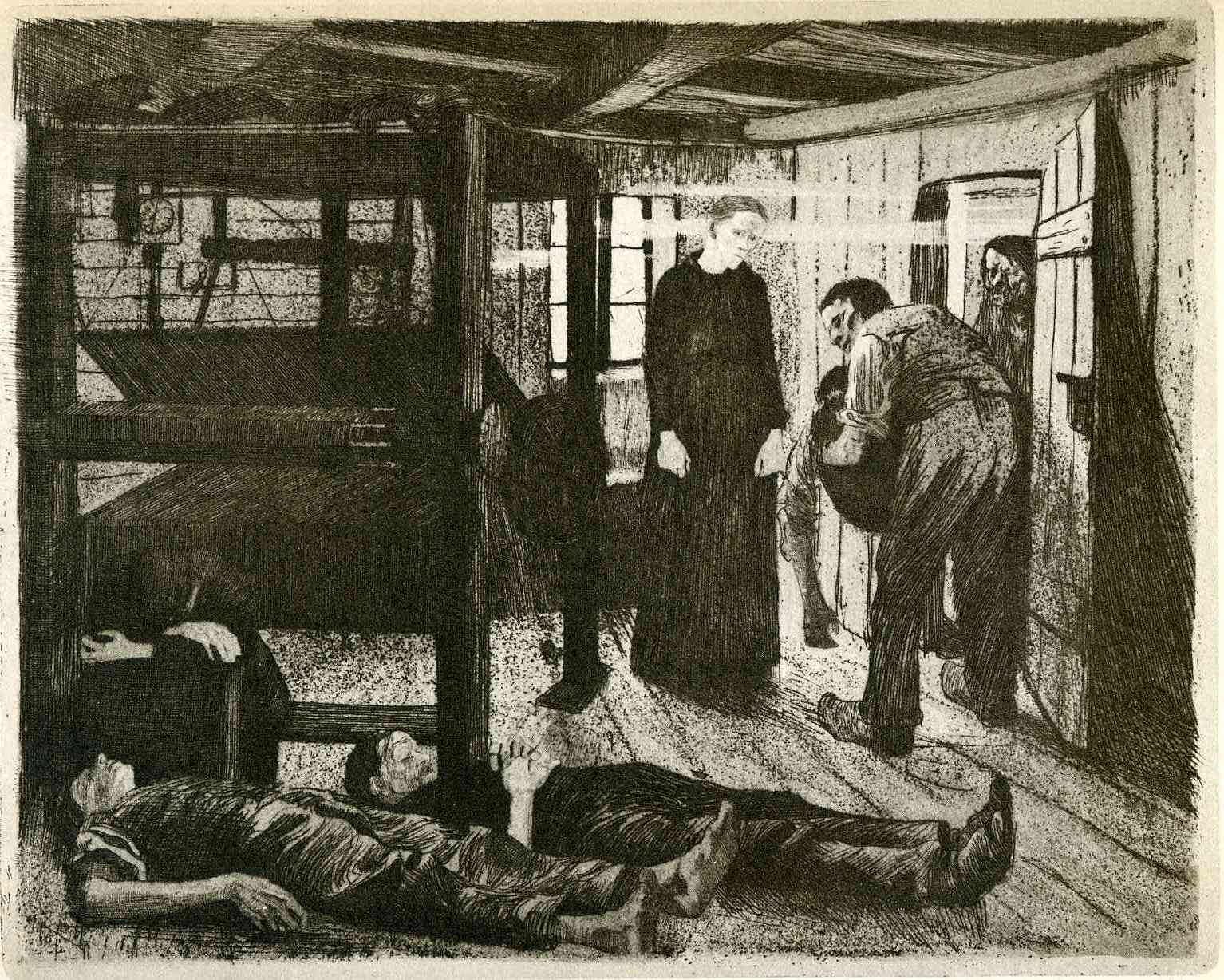
End. From ‘A Weaver’s Revolt’. 1893-97. Line etching.

Raped. From ‘Peasant’s War’, sheet 2. 1907-08. Line etching.

Sharpening the Scythe. From ‘Peasant’s War’, sheet 3. 1905. Line etching.

Charge. From ‘Peasant’s War’, sheet 3. 1902. Line etching.
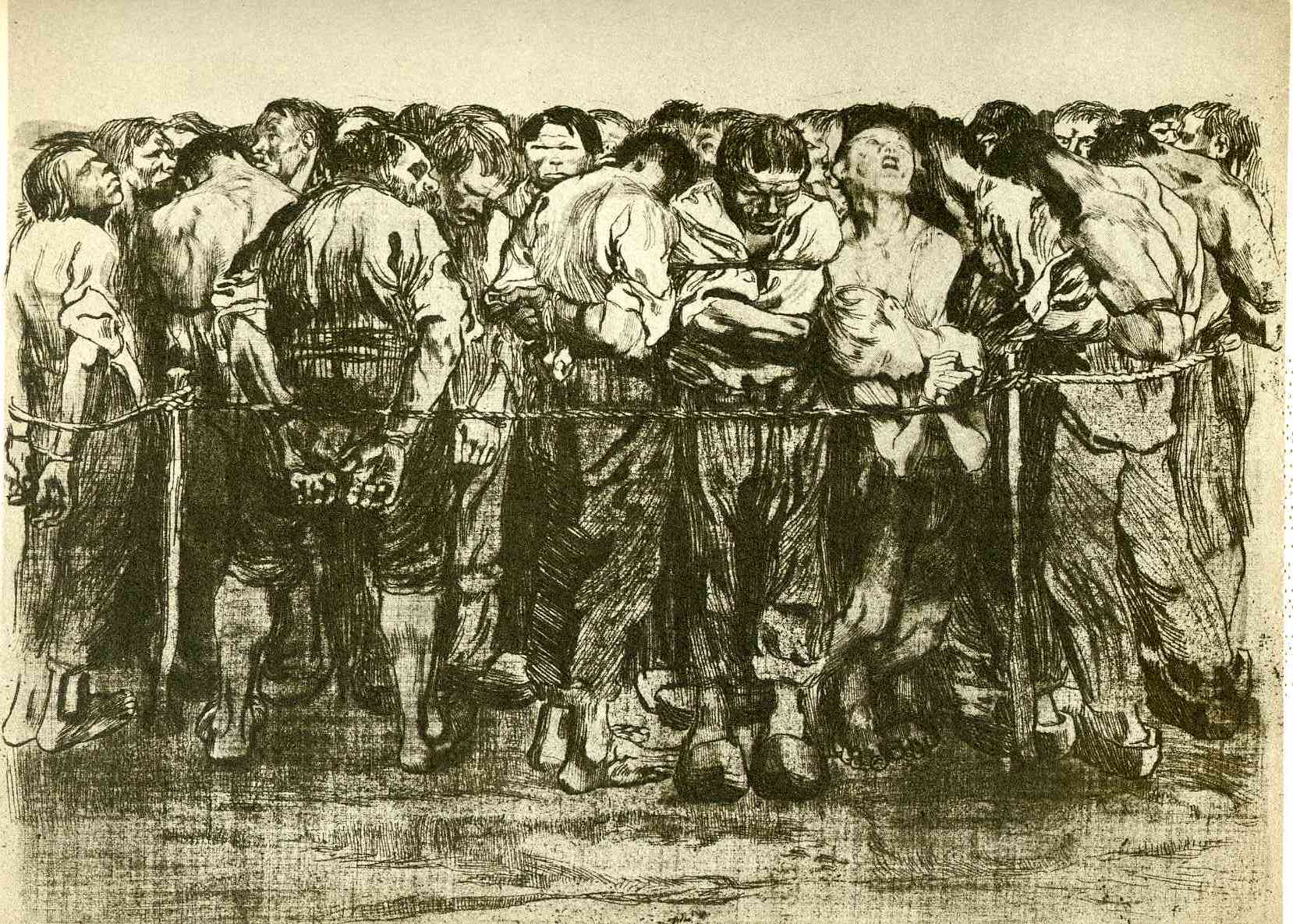
The Prisoners. From ‘Peasant’s War’, sheet 7. 1908. Line etching.

Self-Portrait, Hand at the Forehead. From ‘Zeitschrift für bildende Kunst’, New Series, Vol. 26. 1910. Line etching and drypoint.
.jpg/1105px-K%C3%A4the_Kollwitz_The_Young_Couple_(Junges_Paar).jpg)
Young Couple. 1904. Line etching.

Woman with Crossed Hands. 1898-1899. Line etching.

Praying Woman. 1892. Line etching.

Seated Male Nude. 1891. Line etching.

The Widow I. Fourth plate in the series Krieg (War). 1922-23. Woodcut.

Memorial for Karl Liebknecht. 1919-20. Woodcut.

The Volunteers. Second plate from the series Krieg (War). 1922–23. Woodcut.
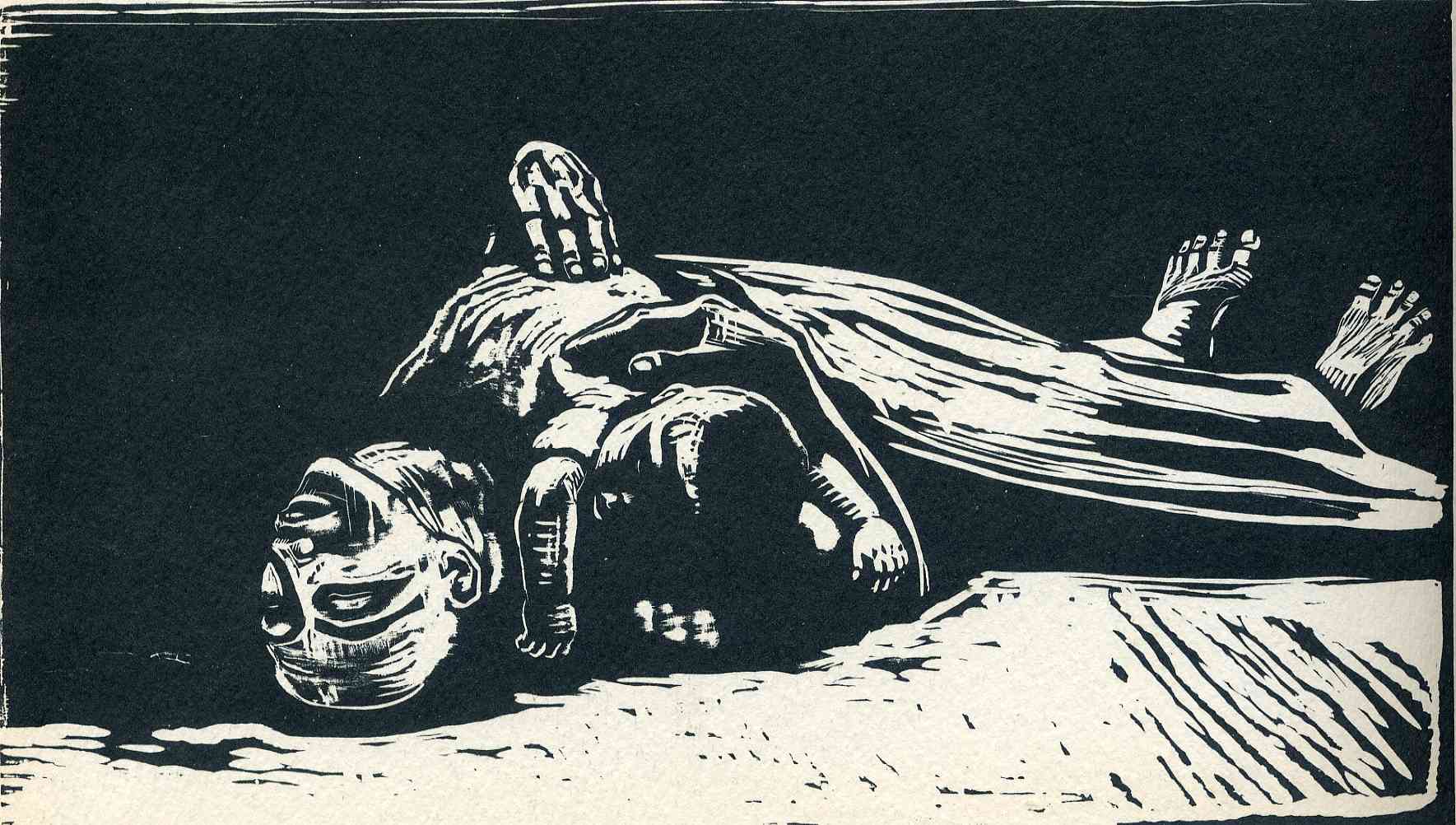
The Widow II. Fifth plate in the series Krieg (War).1922–23. Woodcut.

The People. Seventh plate in the series Krieg (War). 1922–1923. Woodcut.

Children Dying. Third plate from the series ‘Proletariat’ (Working Class).1925. Woodcut.

Hunger. Second plate from the series ‘Proletariat’ (Working Class).1925. Woodcut.

Sleeping Woman with Child. 1930. Woodcut.
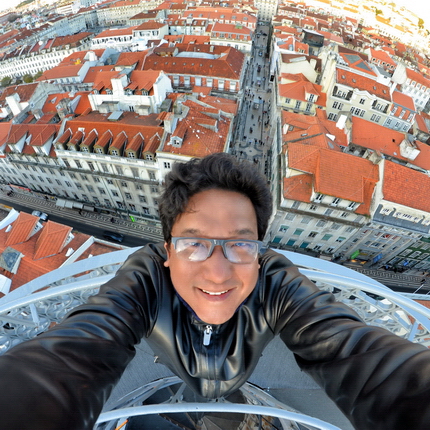
 Photo Gallery
Photo Gallery Hi Milindo, hope you are inspiring many more around you…wherever you are!
Hi Milindo, hope you are inspiring many more around you…wherever you are! You’ll love this site by the awesome Milindo Taid
You’ll love this site by the awesome Milindo Taid OMG its like a painting!! you have taken photography to another level!!!
OMG its like a painting!! you have taken photography to another level!!! Photo Gallery
Photo Gallery This is great…..in fact the entire website is a wonderful treasure. thanks sir!
This is great…..in fact the entire website is a wonderful treasure. thanks sir! i really like your blog – good interesting stuff as always !
i really like your blog – good interesting stuff as always ! Never thought I’d say this, but it was the most interesting classes I’ve sat in.. and of course, the day you played Sultans of Swing for us. Hope you continue to influence the next generations with your dynamic yet simple teachings.
Never thought I’d say this, but it was the most interesting classes I’ve sat in.. and of course, the day you played Sultans of Swing for us. Hope you continue to influence the next generations with your dynamic yet simple teachings. Just detected your blog: impressive. wishing you continued inspiration and health.
Just detected your blog: impressive. wishing you continued inspiration and health. Photo gallery
Photo gallery Photo Gallery
Photo Gallery great blog :)
great blog :) I discover TL of a writer and respected intellectual, with a tolerant, global conscience: @GhoshAmitav – tx @Milindo_Taid
I discover TL of a writer and respected intellectual, with a tolerant, global conscience: @GhoshAmitav – tx @Milindo_Taid Your courses were always the best. By the way, just went through a bit of your website. It’s great! Some good stuff in there that I wouldn’t normally chance upon
Your courses were always the best. By the way, just went through a bit of your website. It’s great! Some good stuff in there that I wouldn’t normally chance upon Photo gallery
Photo gallery Its really good to see you Milindo, with such awesome stuff from you as usual.. loved your blog as well!
Its really good to see you Milindo, with such awesome stuff from you as usual.. loved your blog as well! Photo gallery
Photo gallery #NowFollowing @Milindo_Taid One of the most influential n interesting mentor from my design school. Always loaded. :)
#NowFollowing @Milindo_Taid One of the most influential n interesting mentor from my design school. Always loaded. :) Photo gallery
Photo gallery You are awesome :)
You are awesome :) Photo gallery
Photo gallery This is by far amongst the best curated creative content sites out there and the eye and vision of one man, when good, works better than any funded team. Inspired enormously once again :)
This is by far amongst the best curated creative content sites out there and the eye and vision of one man, when good, works better than any funded team. Inspired enormously once again :) Absolutely amazing blog – a chest full of treasure.
Absolutely amazing blog – a chest full of treasure. Photo gallery
Photo gallery Love your site Milindo. I was excited to see you displaying my husband’s watermelon carvings
Love your site Milindo. I was excited to see you displaying my husband’s watermelon carvings Photo gallery
Photo gallery Photo gallery
Photo gallery Photo gallery
Photo gallery Photo gallery
Photo gallery Milindo Taid – ace teacher, rockstar guide to my projects at film school, guitarist and photographer too. Really good human being as well
Milindo Taid – ace teacher, rockstar guide to my projects at film school, guitarist and photographer too. Really good human being as well Milind never told u but u were my first true inspiration….I almost learnt the guitar watching u play…..thanx for being there
Milind never told u but u were my first true inspiration….I almost learnt the guitar watching u play…..thanx for being there We need more teachers like you :)
We need more teachers like you :) love ur pics…they are like those moments which u capture in your mind and wished u had a camera right at that moment to capture it…but u actually do capture them :) beautiful…!!!
love ur pics…they are like those moments which u capture in your mind and wished u had a camera right at that moment to capture it…but u actually do capture them :) beautiful…!!! Still a fan of your unique and sweet finger strum on acoustic guitar. It made an ordinary guitar sound great. Would just love to see and hear one of those too.
Still a fan of your unique and sweet finger strum on acoustic guitar. It made an ordinary guitar sound great. Would just love to see and hear one of those too. You are inimitable!
You are inimitable! Photo gallery
Photo gallery Your website is full of delightful posts. I’m going to have to watch where my time goes when I’m visiting! :)
Your website is full of delightful posts. I’m going to have to watch where my time goes when I’m visiting! :) Photo gallery
Photo gallery Oldest operating bookstore
Oldest operating bookstore Photo gallery
Photo gallery You’re a role model sir, such awesomeness !!! :D
You’re a role model sir, such awesomeness !!! :D veryveryinterestingwebsite.have been visiting! thankyou!
veryveryinterestingwebsite.have been visiting! thankyou! Photo gallery
Photo gallery Photo gallery
Photo gallery Photo gallery
Photo gallery You are the only faculty member I could connect to!
You are the only faculty member I could connect to! Guitar in your hand reminds me of the MCRC days! You are terrific… :)
Guitar in your hand reminds me of the MCRC days! You are terrific… :) Grt milindo. eachtime want to check out something good on net…know where to go now!
Grt milindo. eachtime want to check out something good on net…know where to go now! With all the magical places you are checking off your bucket list! I want to know how to be you :)
With all the magical places you are checking off your bucket list! I want to know how to be you :) I was just looking at your website… amazing it is… full of knowledge as always..
I was just looking at your website… amazing it is… full of knowledge as always.. Photo gallery
Photo gallery hope you’re changing the world as always :)
hope you’re changing the world as always :) So glad you enjoyed my photos, really honored to be featured on your blog. thank you sir!
So glad you enjoyed my photos, really honored to be featured on your blog. thank you sir!